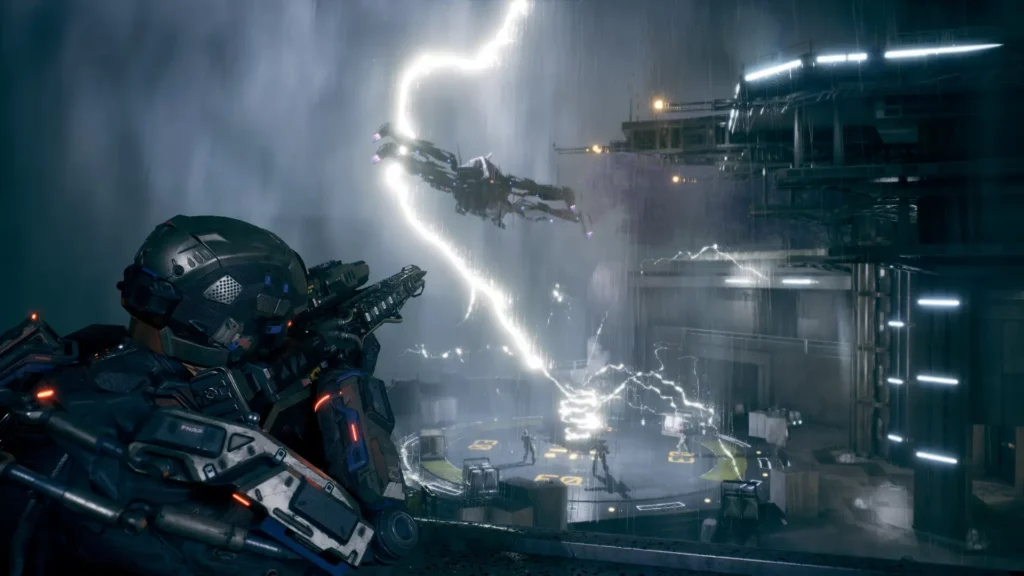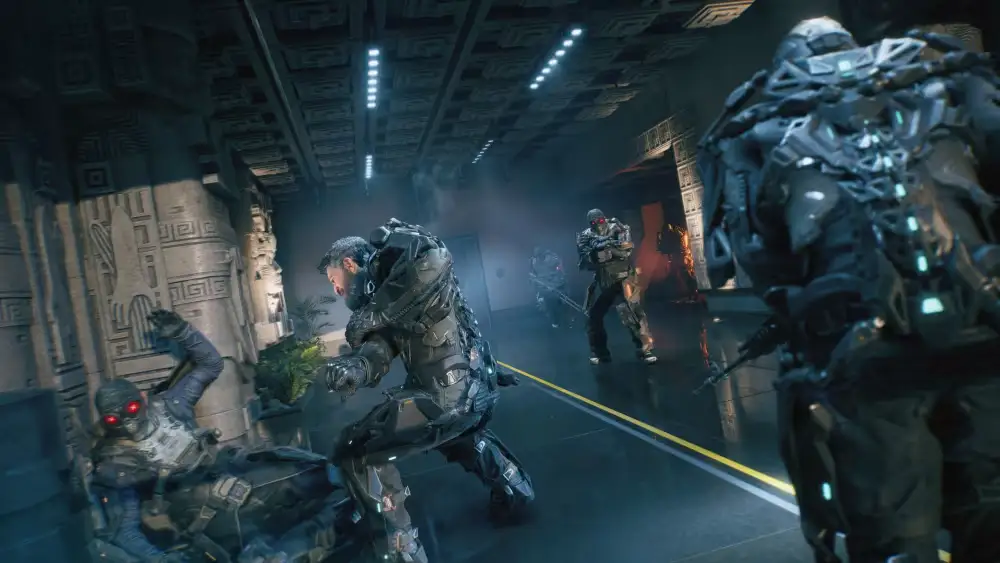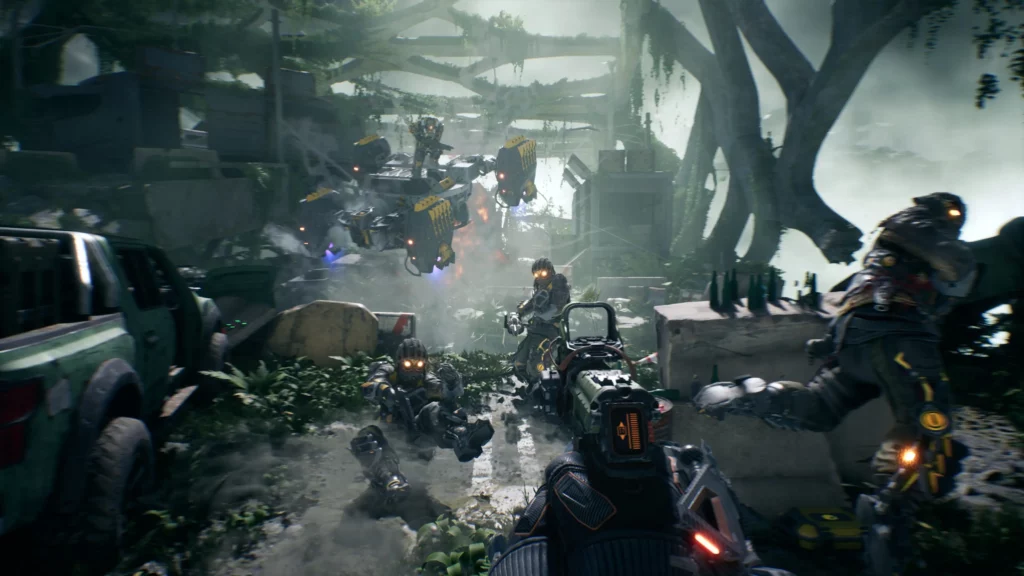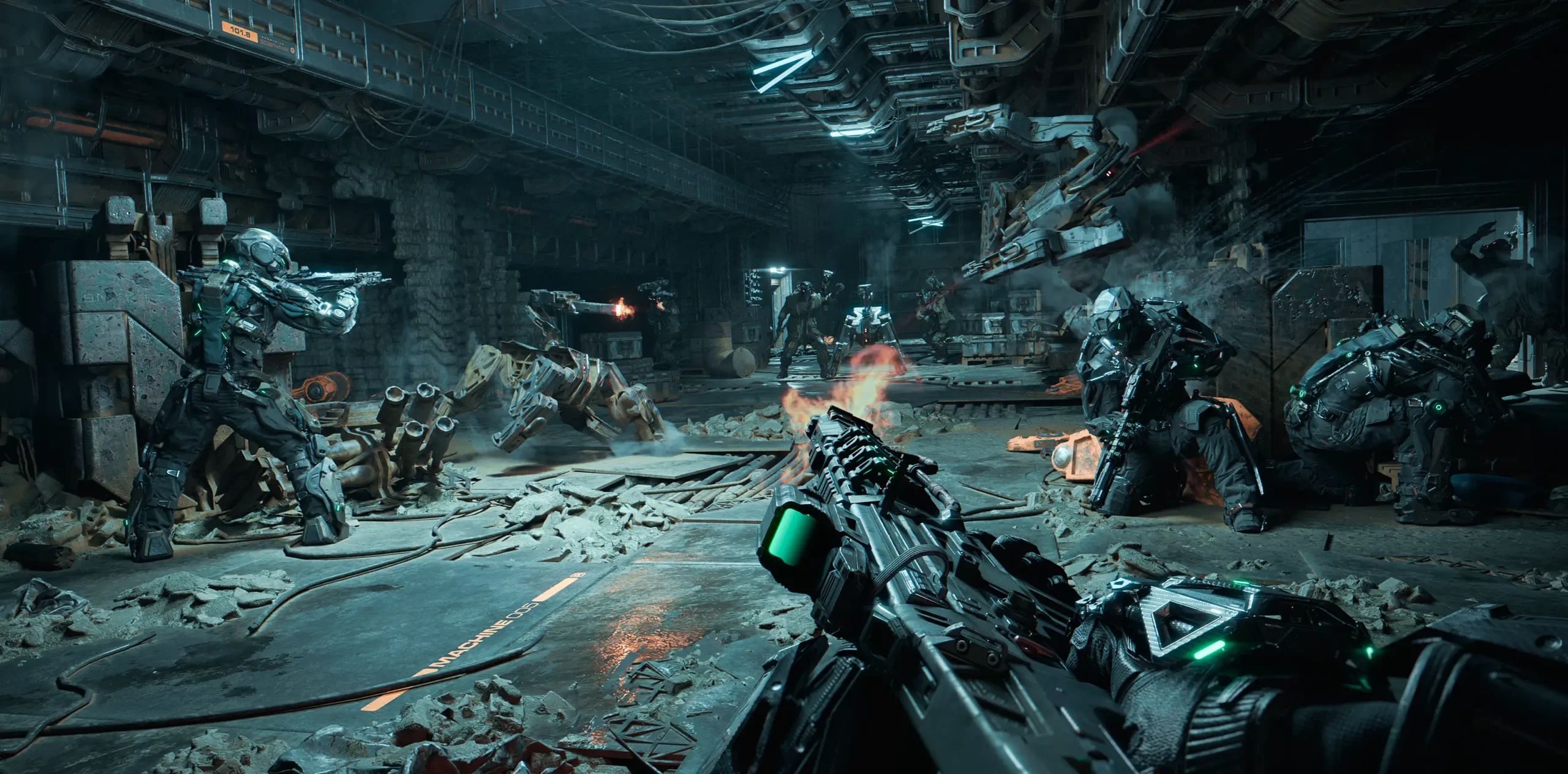La Quimera was originally scheduled for full release on April 25, but a last-minute delay turned it into an Early Access launch. According to an update from April 29, the version players now experience is the same build that was initially reviewed. Given this, the current impressions serve as a reflection of the Early Access release.
Playing La Quimera feels a lot like watching a late-entry sequel to a cult action series. Think low-budget, direct-to-video films packed with mindless entertainment rather than cinematic excellence. This shooter doesn’t shine with standout visuals, gripping writing, or fresh ideas—but if you’re playing with a couple of friends, there’s a strange charm to be found. On most levels, it’s about as effective a game as a fifth sequel in a campy monster movie franchise is at storytelling.
A World in Crisis – But Light on Depth
Set in the fictional city of Nuevo Caracas, chaos unfolds both outside and within. The outskirts are plagued by a vague robot uprising, while the city itself suffers from corporate warfare and extreme poverty. Rather than offering political commentary, the narrative feels like a throwback to gritty 80s sci-fi, featuring powered exosuits that wouldn’t look out of place in Aliens. As a new member of a private military company, you’re thrust into an ill-defined conflict, surrounded by carnage and malfunctioning machines.
Despite the weak plot, the world-building occasionally works. One particularly haunting moment features a “Bone Wall”—a massive barrier made of human remains, constructed in haste during a time of desperation. It’s one of the rare times the environment successfully tells a story without relying on the game’s clumsy dialogue.


Dialogue Derailed
Characters in La Quimera speak often—and it’s rarely enjoyable. Conversations are filled with forced profanity and awkward attempts at coolness, often sounding like someone’s rough imitation of a Tarantino film. The voice acting veers between standard mediocrity and uncanny discomfort, making it hard to tell whether the awkwardness is intentional or simply poor design.
The narrative is equally disjointed. A bizarre series of events sees your squad conscripted after rescuing a billionaire’s daughter, out of fear he might file a lawsuit. This somehow leads to mandatory experimental augmentations. None of it holds together well, and the story abruptly cuts off after just a few hours, offering no real closure.
Gameplay: Crysis Vibes, but on Rails
There’s no hiding La Quimera’s inspiration from Crysis. You gain access to exosuits early on, equipped with armor boosts, cloaking, and scanning abilities. The scanner, in particular, plays a key role, helping locate enemies—even through cover. This pairs well with weapons capable of shooting through walls, offering brief flashes of satisfaction.
However, unlike Crysis, which encouraged open-ended combat, La Quimera sticks to a rigidly linear path. Most missions follow a predictable structure: eliminate enemies, open a heavy door, repeat. While a few set pieces—like a shootout on a rising elevator—offer variety, the level design quickly grows monotonous.

Gunplay is also limited. You’re restricted to a basic set of weapons: sidearm, shotgun, or rifle. There’s no mid-mission swapping, and you’re required to bring one conventional and one electromagnetic weapon into each mission. Unfortunately, conventional guns perform so poorly against robots that there’s rarely a meaningful choice to make.
Resource Scarcity Creates Tension
One redeeming aspect of combat is its ammo economy. As bullets become harder to find in later missions, players are encouraged to scavenge and stay on the move. This keeps the pace brisk during otherwise sluggish firefights.
Progression Falls Flat
Between missions, you’re rewarded with cash to buy upgrades or new gear—but this system feels half-baked. Few items are available, and those that are offer only minor benefits. Exosuit parts can be upgraded for minor boosts, but nothing feels impactful enough to matter.
Even stranger is the inventory cap on money. You’ll often hit a max-cash limit mid-mission, killing any incentive to explore further for loot. Optional audio logs exist for lore, but considering the dialogue quality, they’re easy to ignore.
Co-Op Brings Life to the Chaos
Despite all its flaws, La Quimera can still offer an entertaining ride—especially when played in co-op. Up to three players can tackle the campaign together (excluding the tutorial), and having friends along significantly improves the experience. Bad dialogue becomes a running joke, and coordination during combat—like alternating scan cooldowns—adds depth to the otherwise shallow fights.

Another surprising plus is the game’s length. It’s very short, taking just about four hours to finish. While some might see this as poor value, the brevity helps mask the unfinished feel and repetition. A single evening of chaotic fun with friends might be all this game needs to deliver its highest points.
Final Verdict
La Quimera is undeniably rough—clunky storytelling, repetitive design, and dated mechanics—but there’s a peculiar charm buried underneath. The co-op mode elevates the experience, turning painful moments into hilarious ones, and the short campaign avoids overstaying its welcome. It doesn’t reach the “so bad it’s good” level of entertainment, but it’s not far off. Still, its incomplete state and lack of narrative resolution make it feel more like a project in progress than a full release.
If you’re looking for a short, chaotic shooter night with friends and don’t mind a few cringe-worthy moments, La Quimera might just be a guilty pleasure worth exploring.
